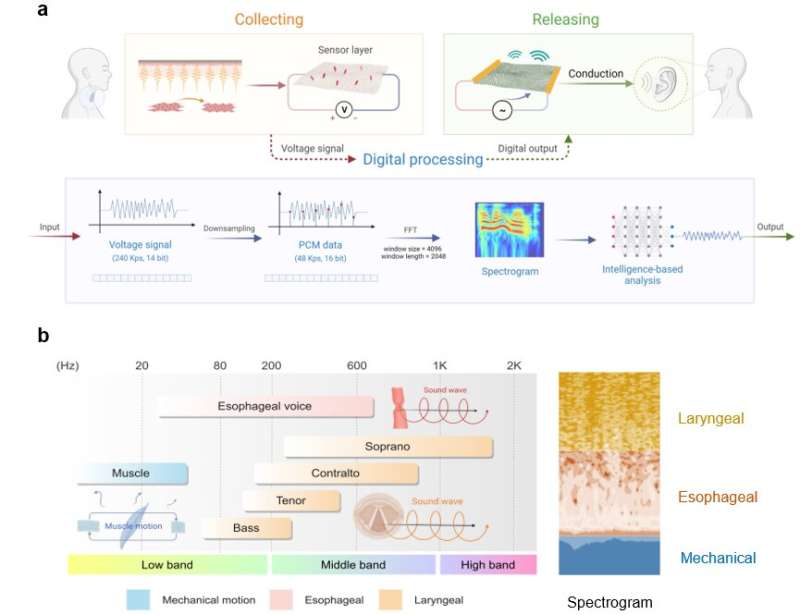March 7, 2023 report
This article has been reviewed according to Science X's editorial process and policies. Editors have highlighted the following attributes while ensuring the content's credibility:
fact-checked
peer-reviewed publication
trusted source
proofread
Chinese team creates vocal cords on a chip

Most of us take our voices for granted. But if we sing too long at a wild party, scream for our team at a sports event or suffer a bout of laryngitis due to a cold, we quickly learn how inconvenient it is to wake up the next day and realize we've lost our voice.
In more serious situations, vocalization can be seriously compromised due to disease, surgery or stroke. In those instances, the inability to communicate efficiently with medical personnel or first responders is more than an inconvenience, it could be life-threatening.
A team of researchers at Beijing's Tsinghua University have developed a simple device that addresses this problem. They designed a wafer-like tool one centimeter square that can easily be affixed to the throat and allow barely audible sounds, or even whispers, to be converted into speech at normal volume.
The device, referred to by researchers as a "graphene-based intelligent, wearable artificial throat," is about the width of plastic cling wrap. The 25-micrometer deep device may be applied to one's throat with a simple adhesive. Tiny wires connect to a microcontroller powered by a coin-sized battery.
Research team leader Professor Ren Tianling stated in an article recently published in Nature Machine Intelligence that the artificial throat is capable of recognizing speech elements such as phonemes, tones and words at an accuracy rate of 99 percent. It relies on an artificial intelligence model to interpret captured sounds and bodily vibrations to generate vocalizations.
"Its feasible [voice] fabrication process, stable performance, resistance to noise and integrated vocalization make the AT a promising tool for next-generation speech recognition and interaction systems," Tianling said.
Current strategies to communicate with voice-disabled patients rely on microphones attached to the body, but that is often unwieldy and considered a "non-friendly" user setup.
Tianling explained that graphene sensors are ideally suited for detection of tiny vibrations on skin surfaces. The device, he said, "can sense muscle motions and audio vibrations transmitted to the surface of the skin" and "convert recognizable mechanical information into speech."
The device also works without interference from noisy, hostile environments such as highways, fire disasters and airplane cockpits.
"The speaker's health status, such as neurological diseases, cancer, trauma, and the surrounding environment, noise interference, transmission medium, often affect the transmission and recognition of sound," Tianling said. This device, he said, overcomes those obstacles.
Tianling says further research is needed to bring more expressiveness to vocalizations achieved by the artificial throat. But he said he believes the simplicity and effectiveness of the device may make it commonplace in the future.
"Our intelligent AT provides a new paradigm for speech recognition, and is expected to pave the way for applications of mechanical sensors to intelligent home health-monitoring systems, wearable electronics and even cryptographic security," he said.
More information: Qisheng Yang et al, Mixed-modality speech recognition and interaction using a wearable artificial throat, Nature Machine Intelligence (2023). DOI: 10.1038/s42256-023-00616-6
Press release (in Chinese): www.tsinghua.edu.cn/info/1175/101610.htm
© 2023 Science X Network

















